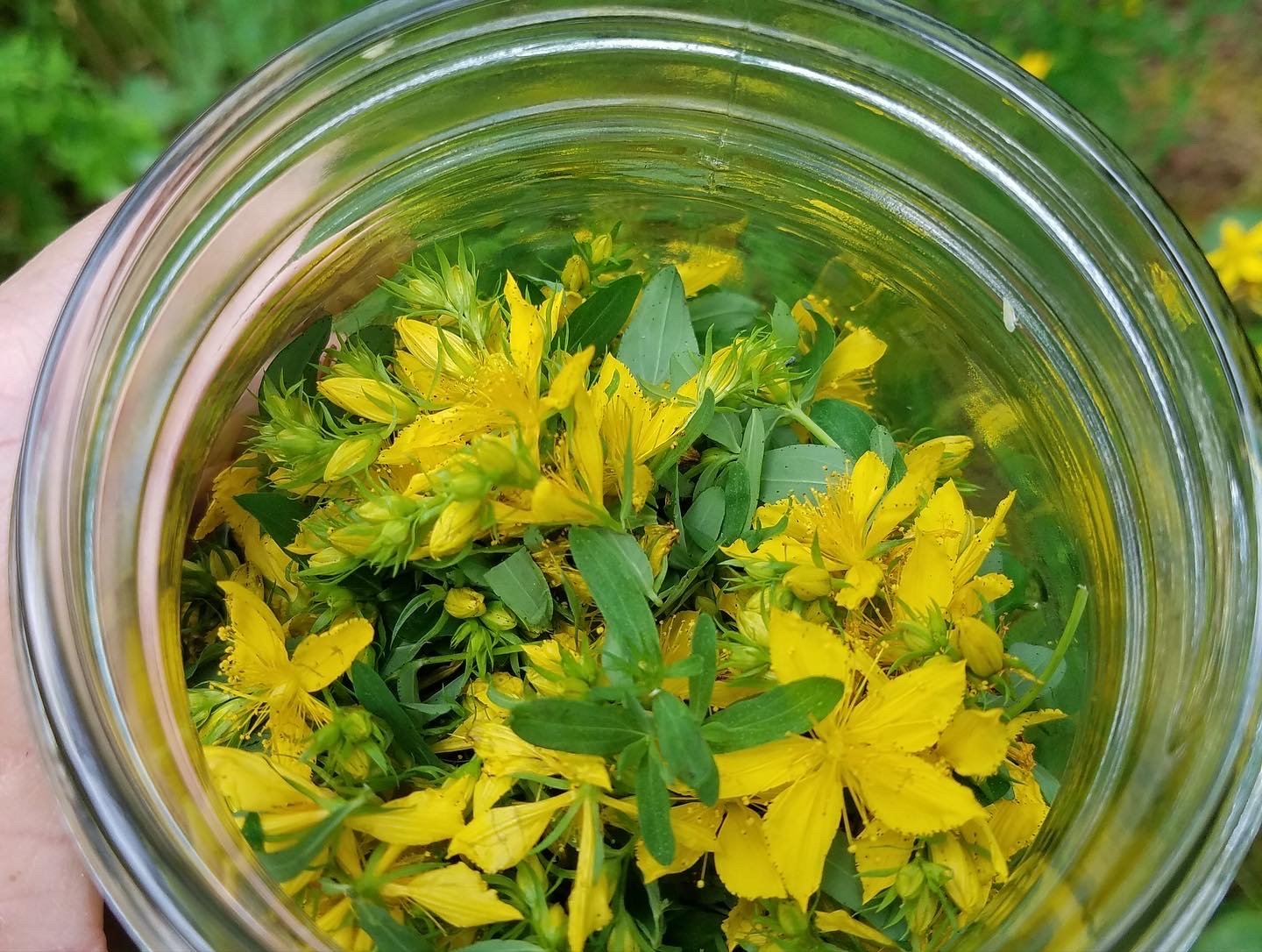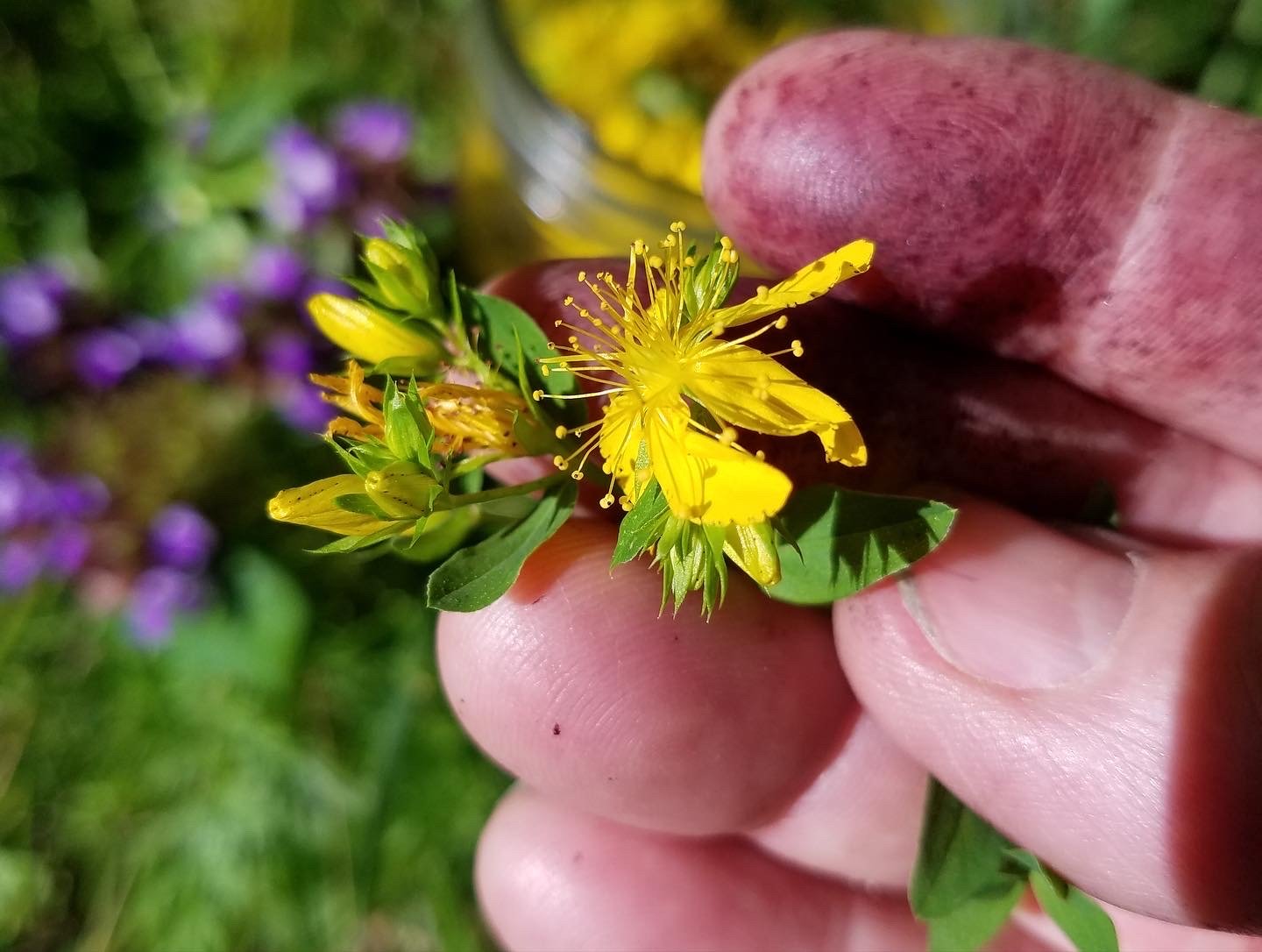St. John’s Wort, named for one of the twelve apostles of Jesus, blooms around the time of the Summer Solstice and St. John’s Day. It is native to Europe and widely naturalized including in the United States. It grows in meadows and forest clearings, needs lots of sun with well drained, but not so fertile soil. It grows from rhizomes and spreads by runners, and many consider it an invasive species despite its medicinal benefits. The Chrysolina quadrigemina beetle was released in the 1940’s as an attempt to control its spread. It is a pretty, iridescent little beetle and while I release them I hope my stands of St. John’s Wort won't decline.
“Wort” , such a curious word, is old English for “herb, plant or root” and there are a few other “Worts” growing in the forest and medicine gardens at Riverbrook. Motherwort is a plant that is well established in our gardens and is made into a tincture each year for her affinity for the heart. Her latin name is Leonurus cardiaca, lion hearted. Mugwort is another plant in the gardens and Lungwort Lichen grows on the Ash trees in the shade of the forest. The name “wort” was apparently given to plants that are beneficial while the opposite of wort was a “weed”, such as ragweed or milkweed, although I don’t necessarily think this is always true.
It’s Latin name is Hypericum perforatum. “Hypericum” means “over a spirit”.. It was traditionally placed over religious pictures and doorways to ward off evil spirits. The species name “perforatum” refers to the translucent spots on the leaves which appear to be perforated. The oil glands contain many medicinal oils and resins including hyperforin and hypercin which turns the oil a deep ruby red.
Identify St. John’s Wort by its bright yellow, wide open petals reaching out to meet the high sun around the Summer Solstice. Pluck a leaf and hold it to the light to identify the oil glands which are translucent allowing the sun to shine through. Gently squeeze a bud between your fingers and if its ready to harvest it will release its reddish or deep purple oil.
Ethical harvesting is important so know the area you’re foraging in and only take what you need and from areas where there is plenty. St. John’s Wort grows well in my forest clearings, medicine gardens and even on the edge of my chicken yard. It’s best to harvest on sunny days when the flowers are likely to be dry. It is the aerial parts we harvest and after receiving permission to harvest and giving thanks I strip some of the upper flowers and leaves from the plant. I meander through the forest filling my mason jar with the beautiful yellow flowers and buds, plucking any stray beetles and admiring the glorious purple on my fingers.
When my mason jar is full, I pour the flowers onto a towel allowing any critters time to escape. I then place the flowers back in the mason jar and with prayers of gratitude, cover with oil. I place the jar in a sunny spot for a few days and then bring it in to continue its infusion. After a few weeks, the oil will turn a deep red.
St. John’s Wort has many uses and is well known for its use in depression. Taken internally, it can interact with other medications so talk with your health care practitioner first if you’re using birth control or other medications.
It is anti-viral and anti-inflammatory and can be used as a tincture, in tea blends and topically. It’s one of my favorite plants to use topically and in skincare products. Topically, it relieves nerve pain and reduces inflammation and is an important ingredient in our Muscle Mend formula and the Bruise Salve. It’s natural oils hydrate the skin, regenerate cells and stimulate circulation and with consistent use will firm, and reduce the appearance of fine lines. Radiant Facial Oil gets its beautiful red color from St. John’s Wort and is my favorite skin care serum, the one I use daily.




